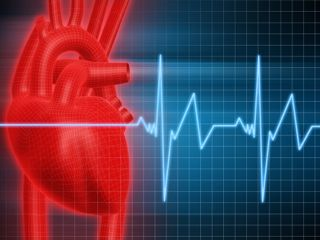
How To Treat Coronary Artery Disease, Pt 1

Cardiovascular disease is a class of diseases that involve the heart and/or blood vessels. It is America's number one killer, taking almost one million American lives every year. It is primarliy a lifestyle disease that is preventable. Therefore, our greatest defense is education about heart health and prevention cardiovascular disease. This is Part 1 of a two part series.
Coronary Artery Disease
Coronary artery disease is the primary form of cardiovascular disease. It is considered a societal and lifestyle disease and it is the leading cause of death for women in the United States. It can be expressed as acute myocardial infraction, angina, angiographic coronary stenosis and sudden cardiac death (Rakel, 2007, p. 295).
Primary Organ/System Affected
The primary organ that is affected in CAD is the heart and the cardiovascular system including the arteries. Plaque builds up on the arterial walls (atherosclerosis) and causes a reduction in blood flow to the heart which can cause angina, or heart attack. In a heart attack blood flow to the heart is completely stopped and may cause death (Coronary Artery Disease, 2009).
 Triggers and Antecedents
Triggers and Antecedents
Traditionally men have been thought to have greatest risk for CAD, but it is now the leading cause of death in women in the United States. Historically most attention has been placed on the buildup of calcium on the arterial wall. Elevated cholesterol levels have also been linked to atherosclerosis in some studies. However, using these markers as risk factors has been unpredictable in predicting heart attacks. More recently attention is being placed on the role of the endothelium (the inner lining of blood vessels), inflammatory markers and plaque instability (Rakel, 2007, p. 295-296). People with the metabolic syndrome are at increased risk of coronary heart disease. The metabolic syndrome has become increasingly common in the United States. It is estimated that over 50 million Americans have it. The metabolic syndrome is characterized by a group of metabolic risk factors in one person. They include:
- Abdominal obesity (excessive fat tissue in and around the abdomen)
- Atherogenic dyslipidemia (blood fat disorders — high triglycerides, low HDL cholesterol and high LDL cholesterol — that foster plaque buildups in artery walls)
- Elevated blood pressure
- Insulin resistance or glucose intolerance (the body can’t properly use insulin or blood sugar)
- Prothrombotic state (e.g., high fibrinogen or plasminogen activator inhibitor–1 in the blood)
- Proinflammatory state (e.g., elevated C-reactive protein in the blood)
Diagnosis
No one exam can diagnose CAD, so doctors may use a combination of the following to determine risk:
- EKG (Electrocardiogram) - detects electrical activity of the heart; can detect patterns that would suggest CAD
- Stress Testing - subject exercises while heart is monitored for irregularities
- Echocardiography - sound waves are used to create moving image of heart; can identify areas of poor blood flow
- Chest X-ray - can reveal signs of heart failure
- Blood Tests - measure fats, cholesterol, sugar, proteins; may show risk factors for CAD
- Electron Beam Computed Tomography - measures calcium deposits around coronary arteries
- Coronary Angiography - uses dye and x-rays to show insides of coronary arteries; used when CAD is suspected after other testing
(Coronary Artery Disease, 2009)
Eliminating the complications of Metabolic Syndrome is key in preventing, and even reversing cardiovascular disease. The Primo Detox Program is designed to control weight and reduce risk factors for this and other chronic illness. Sign up for a FREE Detox Consultation to see what you need to get started!
Sources
Metabolic Syndrome, (2010), Retrieved from http://www.americanheart.org/presenter.jhtml?identifier=4756
Coronary Artery Disease, (2010), Retrieved from http://www.nhlbi.nih.gov/health/dci/Diseases/Cad/CAD_WhatIs.html
Murray, M. 2005. The Encyclopedia of Healing Foods. New York: Atria Books.
Rakel, D. 2007. Integrative Medicine. Philadelphia, PA: Saunders


